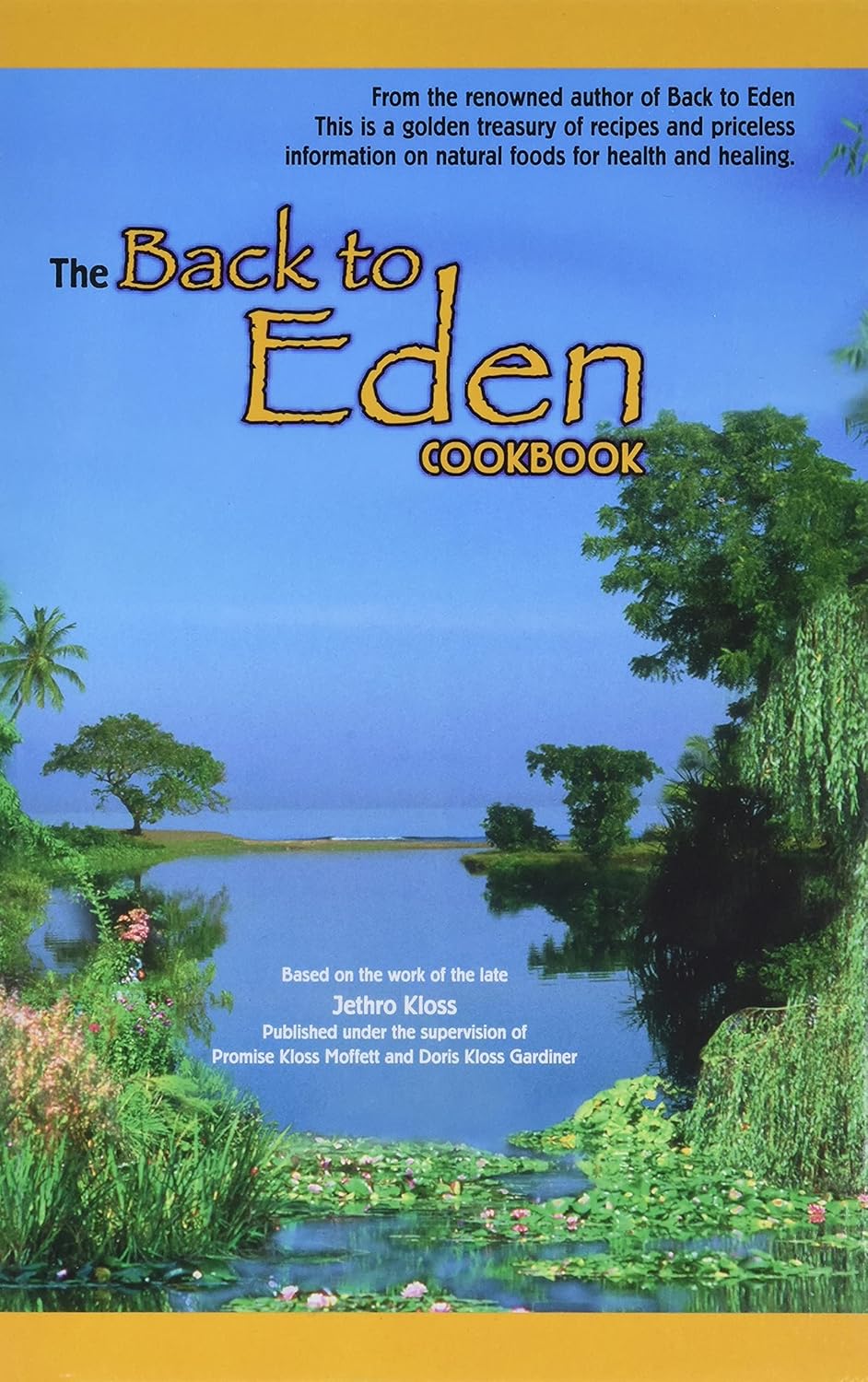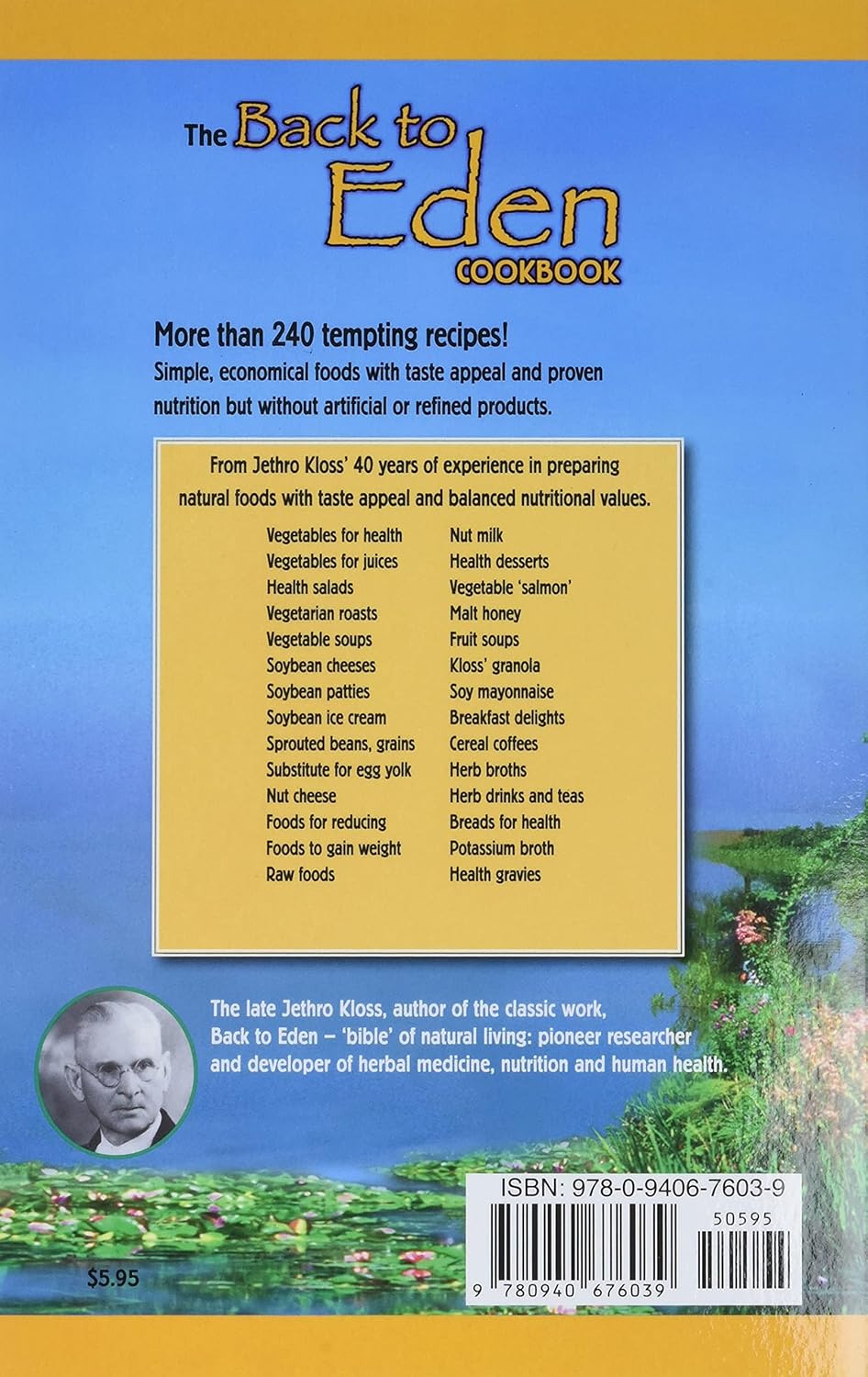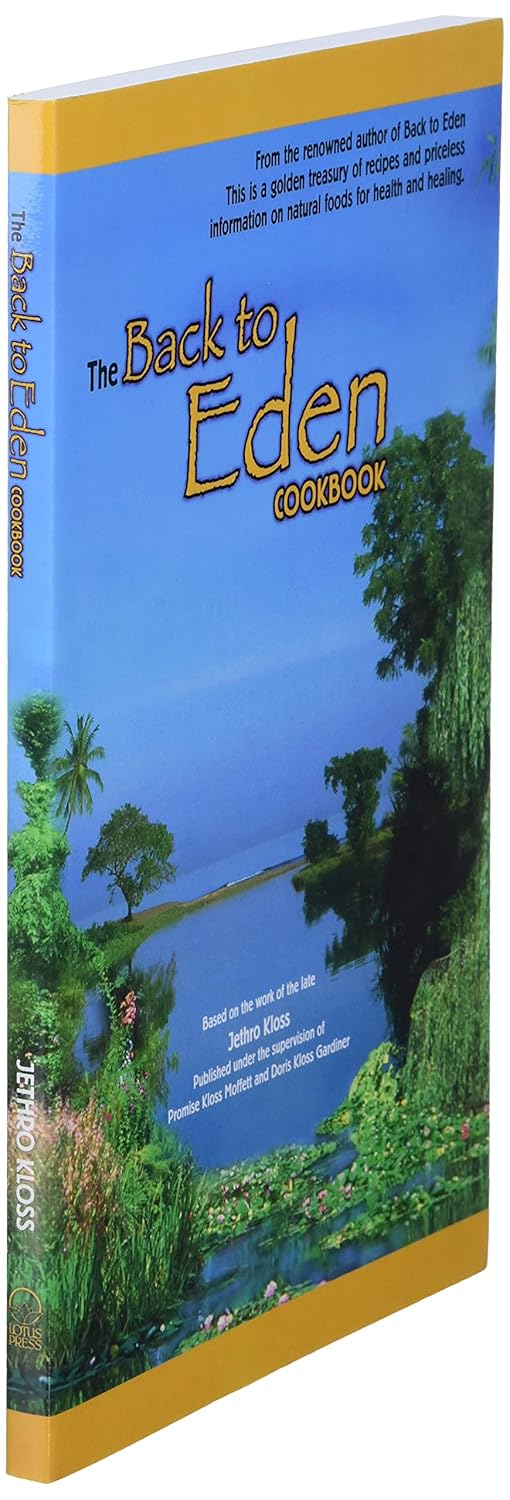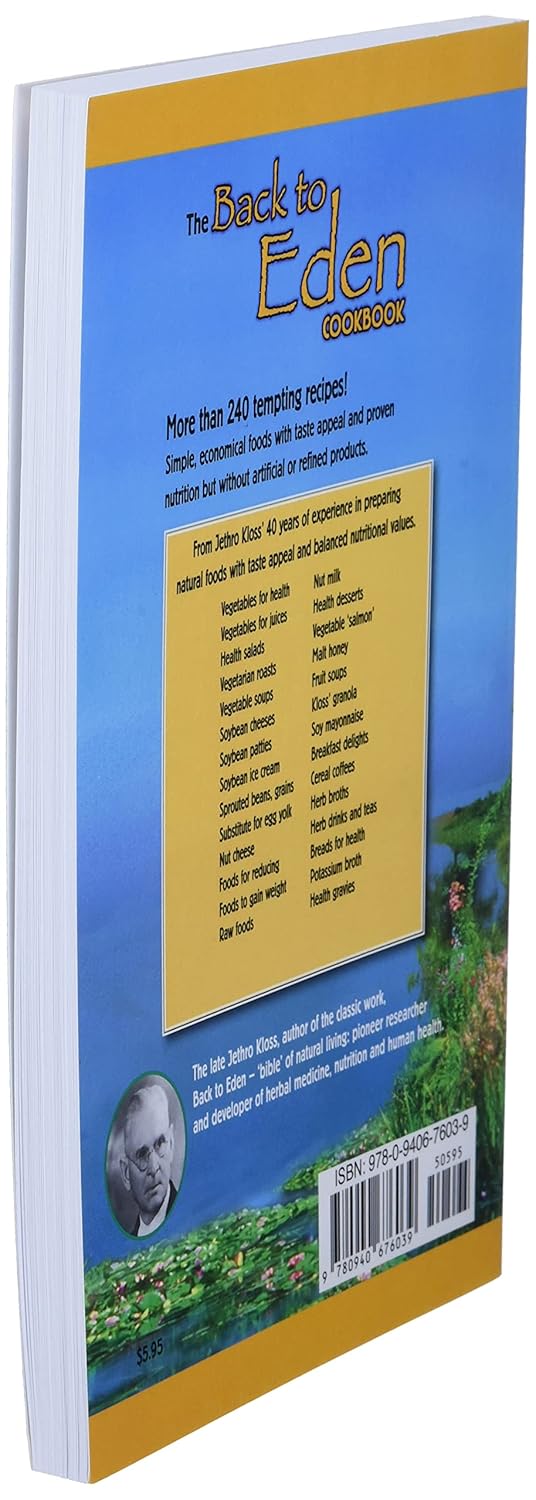
The Back to Eden Cookbook Review back to eden Reading Guide – Oemiu
The Back to Eden Cookbook: A Journey Beyond the Garden
The journey toward a healthier, more sustainable lifestyle often begins with a simple question: “What am I putting into my body?” It’s a question that echoes through the pages of “The Back to Eden Cookbook,” a culinary companion to the renowned “Back to Eden” gardening method. More than just a collection of recipes, this book offers a philosophy, a way of thinking about food and its connection to the earth. It promises a return to simplicity, to whole, unprocessed ingredients, and to a more mindful way of eating, inspired by the wisdom of nature itself.
But does it deliver on its promises? Does it offer truly accessible and inspiring recipes for everyday life, or is it more of a niche exploration for dedicated gardeners? And how does the cookbook tie in with the core tenets of the Back to Eden gardening approach? These are the questions we’ll delve into as we explore the cookbook’s strengths, weaknesses, and overall appeal for a broad audience, even for those who aren’t necessarily adopting the Back to Eden gardening method wholesale. After all, the principles of whole foods and natural living are universally applicable.
Exploring the Roots: The Back to Eden Philosophy and Its Culinary Manifestation
The “Back to Eden” gardening method, popularized by Paul Gautschi, advocates for a no-till, wood-chip-based approach to cultivation. The idea is to mimic nature’s own methods, creating a self-sustaining ecosystem where the soil is naturally enriched, moisture is retained, and weeding is minimized. The cookbook extends this philosophy to the kitchen, emphasizing the use of fresh, seasonal, and minimally processed ingredients. The core belief is that food, like the garden, should be a source of nourishment and healing, rather than a source of processed convenience.
The cookbook isn’t just about vegan or vegetarian recipes, though plant-based options are plentiful. It’s about embracing a holistic approach to food preparation. You’ll find recipes that incorporate natural sweeteners like honey and maple syrup, healthy fats like coconut oil and olive oil, and a variety of whole grains, legumes, fruits, and vegetables. The recipes are often simple and straightforward, designed to highlight the natural flavors of the ingredients rather than masking them with excessive seasonings or complicated techniques. This aligns perfectly with the “Back to Eden” ethos of simplicity and respect for nature. The focus is on creating meals that are both delicious and nourishing, contributing to overall well-being. This isn’t about restrictive dieting; it’s about embracing abundance – an abundance of fresh, wholesome foods that nourish both body and soul. The core of back to eden is a journey of rediscovering the simple gifts provided by nature.
One of the key differences between this cookbook and many others is its emphasis on seasonal eating. The recipes are often organized by season, encouraging readers to take advantage of the freshest produce available at different times of the year. This not only ensures that you’re getting the most nutrient-rich ingredients, but it also connects you more deeply to the natural rhythms of the earth. Imagine preparing a hearty squash soup in the fall with pumpkins harvested from your own garden, or a refreshing berry smoothie in the summer with berries picked fresh from the bush. This connection to the seasons adds a new dimension to the cooking experience, making it more meaningful and fulfilling.
A Detailed Dive into the Recipe Selection and Content
The cookbook contains a wide range of recipes, covering everything from breakfast and lunch to dinner and desserts. You’ll find recipes for soups, salads, main courses, side dishes, breads, and even homemade condiments. The recipes are generally easy to follow, with clear instructions and readily available ingredients. While some recipes require a bit more time and effort, many are quick and simple enough for busy weeknights.
What sets this cookbook apart, however, is not just the recipes themselves, but also the accompanying information and insights. Throughout the book, you’ll find tips on gardening, preserving food, and creating a more sustainable kitchen. There are sections on sprouting seeds, making your own nut milks, and fermenting vegetables. These additional resources add significant value to the cookbook, making it more than just a collection of recipes; it’s a comprehensive guide to holistic living.
The cookbook also includes personal anecdotes and stories from the authors, sharing their own experiences with the Back to Eden gardening method and its impact on their lives. These stories add a human touch to the cookbook, making it more relatable and inspiring. You get a sense that the authors are not just experts sharing information, but also fellow travelers on a journey toward a healthier and more fulfilling life. It’s this sense of authenticity and personal connection that truly distinguishes “The Back to Eden Cookbook” from other cookbooks in the market. It feels less like a manual and more like a conversation with a friend.
| Category | Examples | Emphasis |
|---|---|---|
| Breakfast | Oatmeal variations, smoothies, whole-grain pancakes | Nutritious and energizing start to the day |
| Soups & Salads | Seasonal vegetable soups, lentil stews, hearty salads with whole grains | Utilizing fresh, in-season produce |
| Main Courses | Vegetable casseroles, bean burgers, stir-fries with brown rice or quinoa | Plant-based options and balanced meals |
| Breads & Desserts | Whole-wheat breads, fruit crisps, natural-sweetened treats | Healthy alternatives to refined sugar and processed flour |
Weighing the Pros and Cons: Is “The Back to Eden Cookbook” Right for You?
Like any cookbook, “The Back to Eden Cookbook” has its strengths and weaknesses. Understanding these can help you determine if it’s the right fit for your needs and preferences.
**Pros:**
* **Emphasis on whole, unprocessed foods:** Encourages a healthier and more sustainable way of eating.
* **Seasonal recipes:** Promotes the use of fresh, local ingredients and connects you to the natural rhythms of the earth.
* **Easy-to-follow instructions:** Recipes are generally straightforward and accessible for cooks of all skill levels.
* **Additional resources:** Includes valuable information on gardening, preserving food, and creating a sustainable kitchen.
* **Inspiring stories and anecdotes:** Adds a human touch and makes the cookbook more relatable.
* **Plant-based focus:** Offers numerous vegetarian and vegan options to cater to diverse dietary needs.
* **Promotes food awareness:** Helps readers to understand where their food comes from and how it affects their health and the environment.
**Cons:**
* **May require some adaptation:** Some recipes may need to be adjusted to suit individual dietary needs or preferences.
* **Ingredient availability:** Access to some ingredients may vary depending on your location and the season.
* **Not strictly vegan:** While plant-based options are abundant, the cookbook does include some recipes with animal products.
* **Emphasis on natural sweeteners:** While healthier than refined sugar, natural sweeteners should still be used in moderation.
* **May not appeal to those seeking gourmet cuisine:** The focus is on simple, wholesome meals rather than elaborate dishes.
Ultimately, “The Back to Eden Cookbook” is best suited for those who are interested in embracing a healthier and more sustainable lifestyle. It’s a great resource for gardeners, homesteaders, and anyone who wants to connect more deeply with their food. Even if you don’t follow the Back to Eden gardening method, the cookbook’s principles of whole foods, seasonal eating, and mindful cooking can be applied to any lifestyle. Whether you’re a seasoned cook or just starting out, this cookbook offers a wealth of inspiration and practical guidance for creating delicious and nourishing meals that support your health and well-being. One must approach the back to eden cookbook with an open mind for experimentation in their food and garden choices.
Bridging the Gap: Connecting the Cookbook with the Back to Eden Garden
The real magic happens when you combine the “Back to Eden Cookbook” with the “Back to Eden” gardening method. By growing your own food, you gain a deeper appreciation for the ingredients that go into your meals. You also have greater control over the quality and freshness of your food, ensuring that you’re getting the most nutritious and flavorful ingredients possible.
Imagine harvesting fresh tomatoes from your garden and using them to make a homemade tomato sauce, or picking your own berries and using them to bake a delicious fruit crumble. This connection between the garden and the kitchen is at the heart of the “Back to Eden” philosophy. It’s about creating a closed-loop system where you grow your own food, prepare it with love and intention, and nourish your body with the fruits of your labor.
Even if you don’t have a large garden, you can still grow some of your own food in containers on a balcony or patio. Herbs, leafy greens, and even some vegetables can be easily grown in small spaces. This allows you to enjoy the benefits of fresh, homegrown produce, even if you live in an urban environment. It also gives you a greater sense of connection to the food you’re eating. Understanding how to start a back to eden style garden can benefit anyone’s life.
The “Back to Eden Cookbook” provides valuable tips on gardening and preserving food, which can help you maximize your harvest and enjoy your homegrown produce throughout the year. You’ll learn how to sprout seeds, make your own compost, and preserve fruits and vegetables through canning, drying, or freezing. These skills are not only practical but also empowering, giving you greater control over your food supply and reducing your reliance on processed foods. The Back to Eden cookbook seeks to bring the core principles of the garden into the kitchen.
Beyond the Recipes: Cultivating a Mindful Approach to Food
“The Back to Eden Cookbook” is more than just a collection of recipes; it’s an invitation to cultivate a more mindful approach to food. It encourages you to slow down, pay attention to your senses, and appreciate the simple pleasures of cooking and eating. This mindful approach can transform your relationship with food, helping you to make healthier choices and enjoy your meals more fully.
One way to cultivate mindfulness in the kitchen is to focus on the preparation process. Take your time to chop vegetables, stir sauces, and knead dough. Pay attention to the textures, colors, and aromas of the ingredients. This can be a meditative experience, allowing you to connect with your food on a deeper level.
Another way to cultivate mindfulness is to practice gratitude for the food you’re eating. Before you begin your meal, take a moment to appreciate the journey that the food has taken to get to your plate. Consider the farmers who grew it, the people who transported it, and the cooks who prepared it. This simple act of gratitude can transform your dining experience, making it more meaningful and fulfilling. The book truly encourages a mindful approach to food and the eating experience.
The “Back to Eden Cookbook” reminds us that food is more than just fuel; it’s a source of nourishment, connection, and joy. By embracing a mindful approach to food, we can create a healthier and more sustainable relationship with ourselves, our communities, and the planet.
FAQ: Answering Your Questions About the Back to Eden Cookbook
What is the “Back to Eden” philosophy, and how does it relate to the cookbook?
The “Back to Eden” philosophy, popularized by Paul Gautschi, is a gardening method that seeks to mimic nature’s own methods of cultivation. It centers around the use of wood chips as a mulch to create a no-till garden environment that retains moisture, suppresses weeds, and enriches the soil naturally. The “Back to Eden Cookbook” extends this philosophy to the kitchen by emphasizing the use of whole, unprocessed ingredients that are fresh, seasonal, and sustainably sourced. It encourages a return to simple cooking methods that highlight the natural flavors of food, minimizing the use of processed foods, refined sugars, and unhealthy fats. The cookbook aims to bring the principles of the garden – simplicity, naturalness, and sustainability – into the kitchen, promoting a holistic approach to food and well-being. It bridges the gap between growing and eating, encouraging readers to connect with their food sources and cultivate a more mindful relationship with what they consume.
Are the recipes in the cookbook strictly vegan or vegetarian?
No, the recipes in “The Back to Eden Cookbook” are not strictly vegan or vegetarian, though there is a strong emphasis on plant-based meals. While a significant portion of the recipes features vegetables, fruits, grains, and legumes as the main ingredients, some recipes may include animal products such as eggs, dairy, or meat. The focus is on incorporating whole, natural foods, and while the book caters well to vegetarians and vegans, it does not restrict itself to those dietary choices. Readers who adhere to a specific vegan or vegetarian diet may need to adapt some recipes by substituting animal products with plant-based alternatives, such as using flax eggs instead of chicken eggs or plant-based milk instead of dairy milk. It is important to review the ingredient list of each recipe to ensure it aligns with your dietary preferences and needs.
How easy are the recipes to follow for someone who is not an experienced cook?
The recipes in “The Back to Eden Cookbook” are generally designed to be accessible to cooks of all skill levels, including those who are not very experienced in the kitchen. The instructions are clear and straightforward, and the recipes often rely on simple cooking methods that do not require advanced culinary techniques. However, like any cookbook, some recipes may be more challenging than others. The book provides guidance on basic cooking techniques and offers helpful tips throughout, which can be beneficial for beginners. It is important to read through the entire recipe before starting to cook and to follow the instructions carefully. Don’t be afraid to experiment and adjust the recipes to suit your own tastes and preferences. With a little practice and patience, even novice cooks can create delicious and nourishing meals using the “Back to Eden Cookbook.”
Does the cookbook provide information on gardening or preserving food?
Yes, “The Back to Eden Cookbook” goes beyond just providing recipes and includes valuable information on gardening and preserving food. The gardening tips are often inspired by the Back to Eden gardening method and provide guidance on growing your own fruits, vegetables, and herbs using natural and sustainable practices. The cookbook also includes sections on preserving food through methods such as canning, drying, and freezing, allowing readers to extend the shelf life of their harvest and enjoy fresh, homegrown produce throughout the year. These additional resources add significant value to the cookbook, making it a comprehensive guide to holistic living and empowering readers to take control of their food supply from garden to table. The tips and advice in the book can assist anyone in understanding food and living an easier sustainable lifestyle.
Are the ingredients used in the recipes readily available?
The availability of ingredients used in “The Back to Eden Cookbook” can vary depending on your location and the season. Many of the recipes call for common ingredients such as fruits, vegetables, grains, legumes, and herbs that are widely available in most grocery stores. However, some recipes may require more specialized ingredients such as organic produce, whole grains, natural sweeteners, or specific types of nuts and seeds. Access to these ingredients may be limited depending on your local market. To overcome this, you can consider growing your own fruits, vegetables, and herbs, or exploring farmers’ markets and specialty food stores in your area. You can also order ingredients online from reputable suppliers. Remember to check the seasonality of produce when planning your meals, as this can affect the availability and price of certain ingredients.
How does the cookbook promote sustainability and environmental consciousness?
“The Back to Eden Cookbook” promotes sustainability and environmental consciousness in several ways. First, by emphasizing the use of whole, unprocessed ingredients, it encourages readers to reduce their consumption of processed foods, which often have a high environmental impact due to their energy-intensive production and packaging. Second, by promoting seasonal eating, it encourages readers to choose locally sourced produce, which reduces transportation costs and emissions. Third, by providing gardening tips and information on food preservation, it empowers readers to grow their own food and reduce food waste. Finally, by advocating for a mindful approach to food, it encourages readers to appreciate the connection between their food choices and the environment. The cookbook fosters a holistic perspective that recognizes the importance of sustainable food systems for the health of both people and the planet.
What are some examples of recipes that showcase the “Back to Eden” philosophy?
Several recipes in “The Back to Eden Cookbook” exemplify the core principles of the “Back to Eden” philosophy. Recipes like “Garden Vegetable Soup” showcase the use of fresh, seasonal produce, highlighting the natural flavors of the ingredients and emphasizing the connection between the garden and the kitchen. Recipes featuring sprouted grains demonstrate a commitment to whole, unprocessed foods and the maximization of nutritional value. Recipes utilizing natural sweeteners like honey or maple syrup over refined sugar align with the philosophy’s focus on simple, natural ingredients. Recipes for homemade condiments, such as pesto or salad dressings, encourage readers to avoid processed ingredients and take control of their food preparation. Furthermore, recipes that incorporate preserved fruits and vegetables, such as jams or pickles, demonstrate the cookbook’s emphasis on sustainable food practices and reducing waste by utilizing seasonal harvests throughout the year. These examples highlight how the cookbook translates the “Back to Eden” ethos into practical and delicious culinary experiences.









